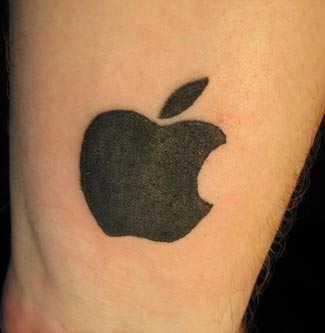
When money’s tight, people look at their budget and separate things into two columns: must-have and might-have.
And lately, branded goods haven’t been making it into the latter column as much as they used to, as a recent Harris Poll has found that 62% of people are making the choice to go “generic” instead of choosing a brand-name product in 2010.
What Branding Used to Mean
Back in the cattle-prodding days, the word ‘brand’ was used as a way to differentiate one line of product from another. Organizations (e.g. ranchers) needed to stand out in the market and identify what products they owned. Plus, they didn’t want to lose cattle.
Now brands are about trust, personal identity, and preference. A brand says as much about the organization as it does about the consumer.
Brands are the reason people …
- Choose the more expensive mustard instead of the same product in a generic bottle
- Choose to dine at the familiar Olive Garden when they travel instead of the unknown restaurant
- Choose to pay more than $4 for a cup of coffee when they know it costs much less
- Choose to identify with an organization, product or service and feel good about making the decision
Is Your Brand Nice-to-Have or Need-to-Have?
It’s a battle of “nice-to-have” versus “need-to-have” when a person is making a purchasing decision, and at the end of the day, the latter typically wins out.
The hallmarks of need-to-have brands?
1. Product excellence:
A need-to-have brand is excellent at delivering the product, service, or experience a person is looking for. Quite simply, it blows them away. It justifies the spend by shedding any anxiety a person might have about trading their dollars in for it. It leaves no doubt in the mind of the consumer that they made a sound purchase. It removes buyer’s remorse by simply being “worth it.”
2. Relevance:
A strong brand identifies with its audience in a way that fits in with their lifestyle. It is sensitive to trends in culture and shifts in behaviors and adapts accordingly so it is never out of touch with its audience. It is aware of the pain points of its audience and finds a way to meet their specific needs (there’s that word “need” again).
3. Properly priced:
The price of a need-to-have brand product or service is aligned with the perceived value the target audience and doesn’t unnecessarily stretch their budget thin. A good price is only what a consumer will pay and is undoubtedly a giant factor when a person is deciding between need-to-have and have-to-have. If a consumer balks at a price point, either the product isn’t good enough or you haven’t done your job in explaining the value. Either way, you have work to do.
4. Consistent:
Consistency doesn’t just apply to design aesthetics (though it should—a brand is a self-expression in some ways, and being inconsistent with image can throw people off and make them lose trust. If they are making a conscious effort to identify with your brand by investing their hard-earned money in it, don’t shake things up on them without warning, you may embarrass or disorient them).
Consistency also applies to your product or service. It’s the same great sandwich, every time. The amazing customer experience, every time. Wonderfully helpful customer service, every time.
Strong branding can strengthen perceived value, encourage people to purchase (despite there being other options), build trust and awareness, and differentiate your organization from your competition.
If your brand is a promise, you better make sure you keep it, or you can find your brand going from “have-to-have” to “hate-to-have.”
[image: powerbooktrance]